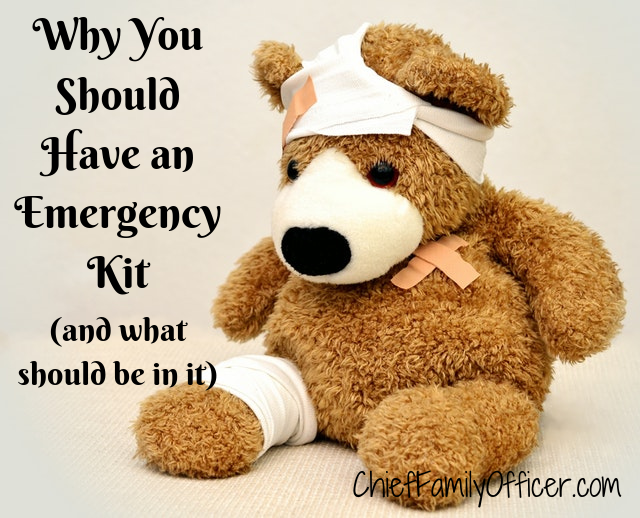
A few weeks ago, we had a couple of rather big earthquakes in the Los Angeles area. Then my husband and I went to Costco the Saturday after the earthquake, and there were so many people buying water that it was clearly a reaction to the quakes. It got me thinking again about our earthquake kits, and how important it is to be prepared because you never know if and when "the big one" will hit. (Maybe they'll figure out those earthquake warning systems - but I'm not counting on it!)
I wasn't in Los Angeles for the huge Northridge earthquake in 1994, but my husband still remembers it well. There was broken glass to clean up and stores were wiped out of supplies (he was grateful they got their hands on some Chocodiles).
Emergency kits aren't just for those living in earthquake zones, of course. I've never lived in areas prone to tornadoes, but the needs seem similar. And of course, everyone should be prepared to evacuate in an emergency, for example, if there's a fire or hurricane or tsunami.
Here's what should be in a basic emergency kit, according to the federal government:
- Water - Minimum of three gallons of water per person (i.e., one gallon per day)
- Food - Minimum of three-day supply of non-perishable food (include a manual can opener if applicable)
- Battery-powered and/or hand-crank radio and a NOAA Weather Radio with tone alert (I just purchased this one for our annual emergency kit update)
- Flashlight
- First aid kit
- Extra batteries
- Whistle (in case you need to signal for help)
- Dust mask (to filter contaminated air), and plastic sheeting and duct tape (to create a shelter)
- Moist towelettes, garbage bags, and plastic ties (for personal sanitation)
- Wrench or pliers (to turn off utilities)
- Maps of the local area (keep in mind that GPS may not work)
- Chargers/Backup batteries for your cell phones
- Prescription medications
- Glasses
- Cash
- Change of clothes
We have one kit in our bedroom closet, and more supplies in other closets as well as the garage. Each family member has a backpack, with a change of clothes and basic supplies like a flashlight, batteries, etc.
Our supply of bottled water is in the garage, along with an Aquatainer that we can fill if necessary.
One final tip: Keep a pair of shoes near the bed so that you can put them on in case there's debris on the floor in the middle of the night and you have to move quickly.
Like insurance, an emergency kit is something you hope you'll never need, but if you do, you'll be so glad you have it!
This post contains affiliate links that help support this site at no additional cost to you. Thank you for using them! You can read CFO's full disclosure here.




No comments:
Post a Comment